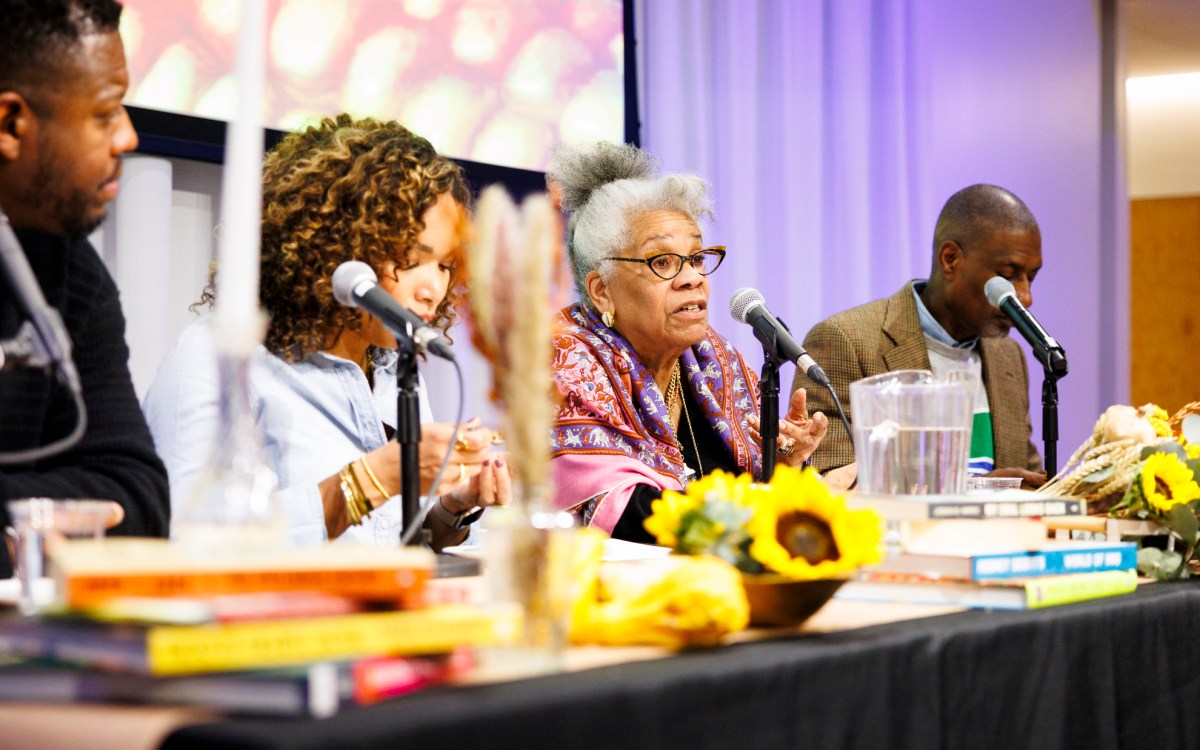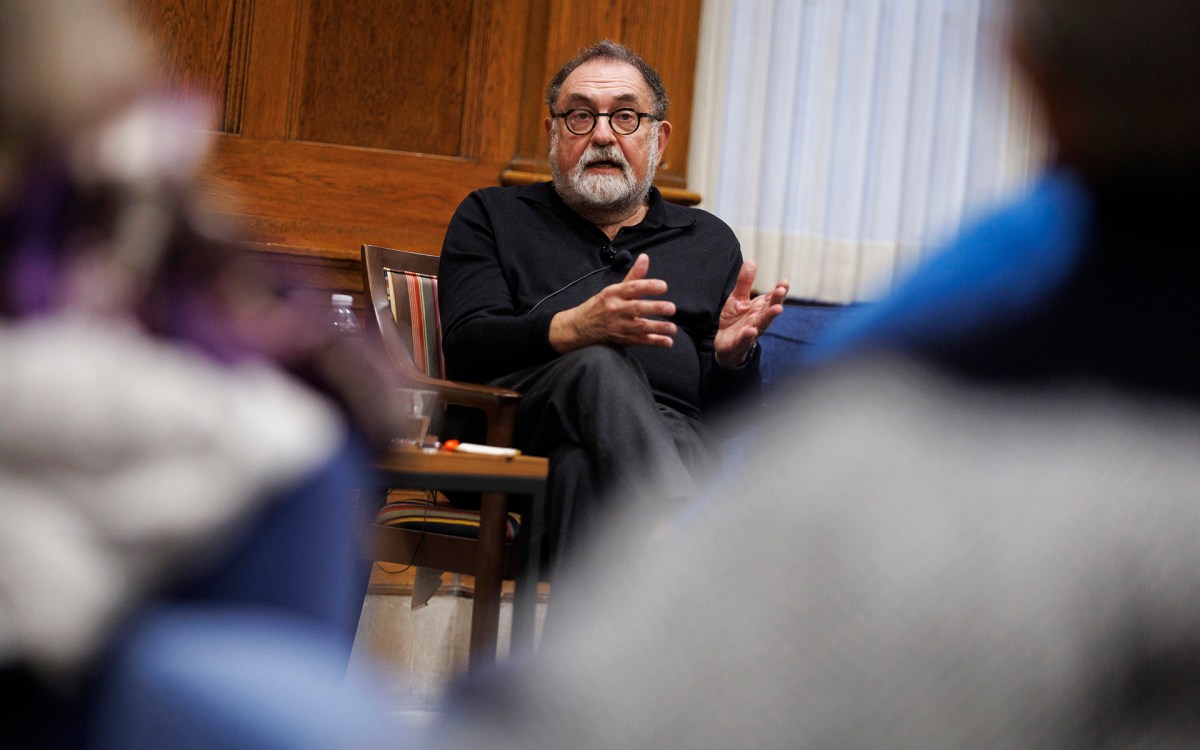History of a ‘scribal machine’
Jing Tsu studies the ‘systematization’ of Chinese
Starting in the 1920s, Chinese writer Lin Yutang earned a reputation as an urbane essayist and translator who moved easily between the literary cultures of the East and West.
Lin — who had briefly been a graduate student at Harvard — was a witty champion of free speech in an era when the world faced a storm of emerging totalitarian regimes. In 1936, he took up residence in the United States, where he became a sort of cultural go-between.
Lin’s 1935 bestseller, “My Country and My People,” offered Western readers an arresting portrayal of the Chinese mindset of the time. Two years later, “The Importance of Living” argued for the importance of earthly pleasures, including eating, smoking, and aimless leisure. “All nature loafs,” he observed, “while man alone works for a living.”
But more than culture intrigued the polymathic Lin, who was an inventor too. He worked for decades designing a typewriter for Chinese, a language that depends not on a handful of alphabetic letters but on thousands of picturelike characters.
By 1946, Lin filed a patent for his Chinese-language typewriter, a desktop device 19 inches wide that took nearly all his book profits — $120,000 — to research, develop, and build.
Before his death in 1976, Lin had been nominated for a Nobel Prize. But it was not his literary legacy that attracted literary scholar and cultural historian Jing Tsu — it was the typewriter that had nearly bankrupted him.
Tsu has a Harvard Ph.D. in East Asian languages and civilizations (2001) and was a Junior Fellow at Harvard (2001-04). This year she’s on leave from Yale University to be a Radcliffe Fellow.
Tsu is using the year to write her book “Bend the Mother Tongue: Sinophone Literature,” and recently (March 18) shared some of her work in progress with an audience of 50 at the Radcliffe Gymnasium.
In part, the book is an exploration of how the past 100 years have seen the transformation of the sound and script of Chinese. The language of ancient ideographs flowered outward in a diaspora of literary production beyond China – in Southeast Asia, North America, and Europe. (Lin himself embodied that diaspora: China-born, Europe-educated, and America-bound.)
In the same period of time, Chinese changed from a closed system of formal writing to a standardized language based on what was once its northern vernacular.
During the 1920s, Lin was part of a wave of literary and linguistic reforms inaugurated by the May Fourth Movement. He was among linguists who by 1926 had devised Gwoyeu Romatzyh. That scheme for writing Mandarin in the Latin alphabet was officially adopted by China in 1928. (The current Romanization standard is called pinyin.)
Around the same time, Lin started tinkering with the idea of his typewriter, seeing it as a way to mesh Chinese script reform with Western technology. His ideographic writing machine, said Tsu, eventually drew engineers from England and Italy and experts in casting custom type from New York’s Chinatown.
Telling the story of Lin’s “scribal machine” today, she said, is a way of uncovering a little-known history of how the Chinese language was systematized into a form of “national writing” that was then disseminated by technology.
The story also captures a turning point where the ideographic script was formally revised in light of alphabetic writing. That in turn led to further developments in machine-assisted translation in the United States during the Cold War.
Lin’s typewriter also adds an important twist to “a renewed fascination with the Chinese language in the West,” said Tsu.
While Lin was working on his typewriter design, Chinese still suffered from a global perception that the ideograph — a stroke-based rendering of a tonally complex language — was deficient compared with the simplicity of Western alphabet letters.
By 1930, Cambridge University linguists had developed BASIC (British American Scientific International Commercial) English, an intentional universal language based on 850 simple root words in English.
It was an attractive idea, said Tsu — in part because even though the average Englishman had a vocabulary of 10,000 words, only 1,000 were used 90 percent of the time.
But BASIC had grammatical constraints that, among other things, made metaphor unlikely. It was adequate to convey meaning, Tsu pointed out, but “doesn’t make your heart grow wings.”
She offered an example: In BASIC, a woman’s breast — a notion of universal erotic import — becomes the merely functional “milk vessel.”
Lin was a critic of BASIC for similar reasons. The word “onion,” he wrote in one essay, becomes “white root that makes eyes full of water,” while a scrambled egg is rendered as “egg in bad shape.”
Lin and other critics were troubled by BASIC for a graver reason too, claiming that it was a linguistic remnant of imperialism. (Lin favored pidgin English as an alternate universal tongue, calling it “a glorious language” with proven popularity worldwide.)
For all its flaws, BASIC was essentially a Western argument that the alphabet was superior to the ideograph. It challenged the “translatability” of Chinese in an age when different languages were competing to be the world’s universal language.
Lin’s machine changed that balance of power, and reduced what Tsu called the “alphabetic myth” by a clever parsing system that broke ideographs into smaller top and bottom units.
Lin took the distinctive five strokes of the Chinese ideograph and indexed them as separate radicals. Of the typewriter’s 72 keys, 36 represented the upper left of the characters and 28 the lower left.
When the operator pressed two keys at the same time, eight possible stroke combinations appeared in what Lin called “a magic window.” One of them was the compete character desired — chosen by pressing one of the eight remaining keys.
This clever parsing system broke ideographs into smaller units, mechanized the ideograph, said Tsu, and made Chinese a competitor in the 20th century’s struggle for a dominant world language.
In a way, “Bend the Mother Tongue” is a continuation of Tsu’s first book, “Failure, Nationalism, and Literature: The Making of Modern Chinese Identity, 1895 to 1937” (Stanford University Press, 2005).
That book is a contrarian exploration of how China built its national identity by embracing the idea of deficiency and failure, as a clever cultural response to military humiliations and the idea of a “yellow peril.”
Establishing a standard mother tongue raised similar emotional issues for China, as regional vernaculars warred within its borders for linguistic dominance.
But the outcome was sunnier, said Tsu: Chinese emerged onto a global stage as a legitimate competitor in what is still a world struggle for a universal language.
The desire for universality doesn’t end with language, Tsu said later. Take, for instance, China’s recent proposal (March 23) that the world adopt a super-sovereign reserve currency unconnected to a single nation-state.
“That prompts us to think about how global languages circulate much like currency does,” she said.
“It’s all about the power of access,” Tsu said, “which an exclusive look at literary language doesn’t always tell us.”




